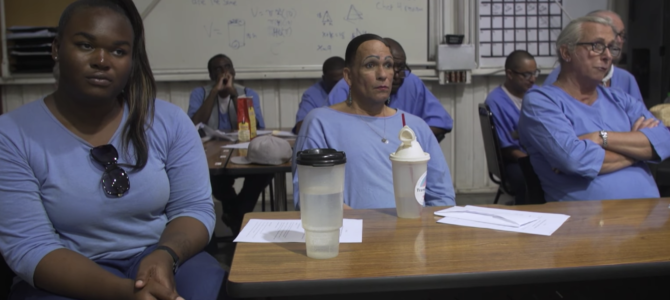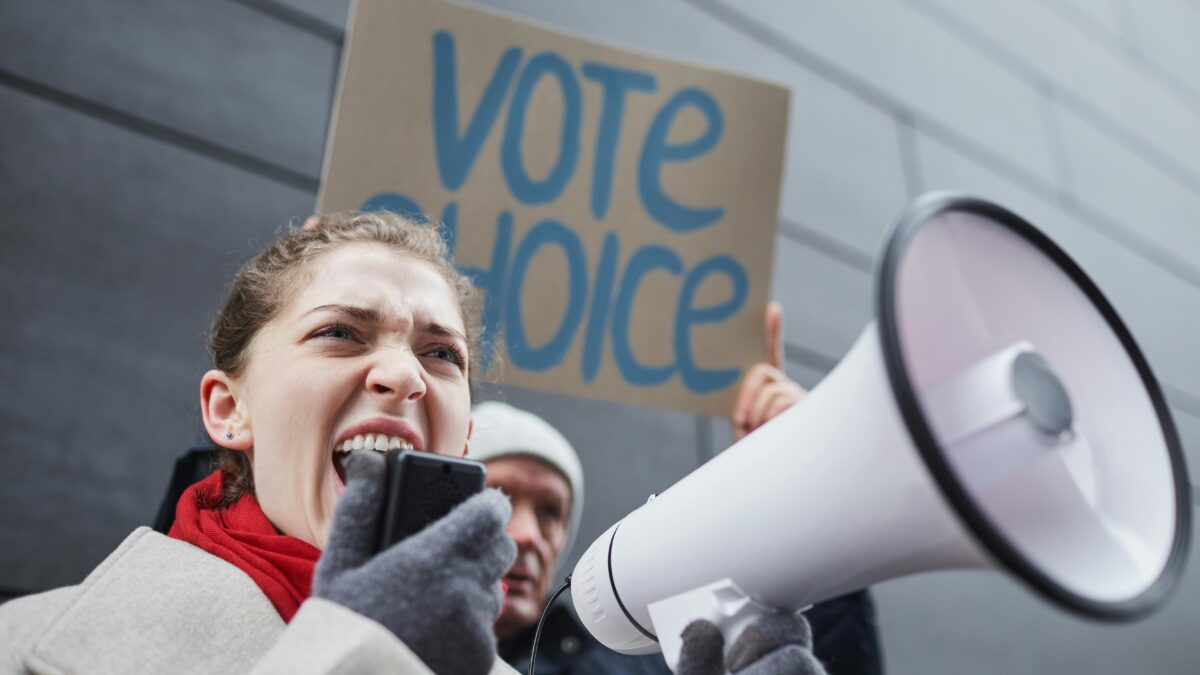
On January 1, California’s SB-132, which mandates housing prisoners according to their gender identity, took effect. Since then, 261 transfer requests have been made under the law — nearly all men seeking transfers to women’s prisons.
To date, only a few transfers have occurred, with the Department of Corrections blaming COVID. While an evergreen excuse, in reality, SB-132 created a nightmare scenario, leaving prisons unable to protect female inmates if they actually do what the law requires.
Last September, California Gov. Gavin Newsom signed SB-132 into law, declaring the statute represented another step forward in the march toward equality for LGBTQ people. Those championing the law, such as the bill’s author, state Sen. Scott Wiener, cheered the statute as supporting “the California Department of Corrections and Rehabilitation’s efforts to provide a safe, humane, respectful and rehabilitative environment for the incarcerated transgender, non-binary and intersex community.”
Instead, SB-132 creates unworkable mandates for the California prison system that place female inmates and correctional officers at risk. The only way to safeguard these women is for prisons to feign compliance with the law.
SB-132 consists of four sections, with Section 1 merely providing a marketable title for the bill, “The Transgender Respect, Agency, and Dignity Act.” Section 2 declares the legislative findings on which the state relied to enact the substantive provisions of the statute that follow in Sections 3 and 4.
Among other things, Section 2 explains what transgender, non-binary, and intersex mean, such as that “’transgender’ is broad and inclusive of all gender identities different from the gender a person was assigned at birth including, but not limited to, transsexual, two-spirit, and māhū.”
“Nonbinary” includes “individuals who may experience a gender identity that is neither exclusively male nor female or is in between or beyond both of those genders, including, but not limited to, gender fluid, agender or without gender, third gender, genderqueer, gender variant, and gender nonconforming.” Section 2 also highlights statistics of harassment and violence affecting transgender prisoners.
Section 3 then begins the substantive mandates of the law and provides that at the initial intake the Department of Corrections and Rehabilitation shall ask for an inmate’s “gender identity of female, male, or nonbinary,” whether the individual “identifies as transgender, nonbinary, or intersex,” and “the individual’s gender pronoun and honorific.”
Inmates will Abuse the System
A prisoner cannot be disciplined for refusing to respond to these questions or for providing incomplete responses, but should a prisoner later decide to share (or change) this information, prison employees must again ask the inmates their preferred pronouns and honorifics. (The statute also defines gender pronouns with the ungrammatical explanation that “gender pronoun” mean a third-person singular personal pronoun, such as “he, she, or they.”) SB-132 then declares it illegal for a correctional officer to “consistently fail to use the gender pronoun and honorific an individual has specified.”
Anyone who thinks the prisoners won’t play up these supposed “protections” to harass prison staff or to file frivolous lawsuits is unacquainted with prisoner litigation and the penchant for those confined to pass time by filing meritless cases pro se, meaning without an attorney. In the federal court system alone, each of the 94 circuit courts is allocated “pro se law clerks” to screen cases filed by unrepresented individuals.
Further, according to federal statistics, prisoner petitions account for 69 percent of the pro se docket, and a whopping 91 percent of prisoner cases are filed without an attorney, with more than 900,000 such petitions clogging up federal courts between 2000 and 2019. While some prisoners have genuine claims, the overwhelming majority lack merit, which both wastes taxpayer resources and delays relief for prisoners presenting legitimate and potentially life-threatening complaints.
California’s promise of a pronoun-of-the-day will only further congest the courts’ dockets with frivolous claims. That negative does not address the real First Amendment violation the law inflicts on correctional officers when the state compels its employees to speak a falsehood — that he is a she, or she is a he.
SB-132 creates much graver problems than pronouns (although compelling false speech, especially in contravention to a person’s sincerely held religious beliefs, is a serious concern in its own right), with Section 4 mandating that prisoners be “housed at a correctional facility designated for men or women based on the individual’s preference.” Again, the plain language of Section requires prisoners to be housed based on their preference and not their sex. SB-132 thus gives male inmates the right to be housed in female prisons.
Zero Protections for Women
Supporters of the law suggest female prisoners will be protected because the Department of Corrections and Rehabilitation has the authority to deny a housing preference based on “management or security concerns.” But California has already transferred a violent baby killer to a women’s prison, and in Washington, a man housed in a female prison has been accused of rape. In short, the “management or security concerns” provision of SB-132 provides no protection for women, unless the Department of Correction ignores the mandates of the law.
Why? Because the language of the statute requires the Department of Corrections and Rehabilitation to accept an inmate’s self-defined gender identity, including a claim of a “non-binary gender,” and then prohibits the prison from denying the preferred placement “based on any discriminatory reason.”
While the statutory language provides some examples of inappropriate consideration for denying a housing placement, such as the inmate’s anatomy, genitalia, and other physical characteristics, the statute does not limit discrimination to those factors.
So, what happens when a lifer convicted of serial rapes declares himself transgender and seeks placement in a female prison? The Los Angeles Times reported that, according to one male prisoner who identifies as a woman, he “knows at least five inmates who have applied to transfer under false pretenses.”
The transgender inmate further claimed that staffers wanted him “in a confidential setting to tell them who is transgender and who is not, so they can block some of these guys from going to the women’s prison.” “I told him I don’t have a problem with it … We feel they’re climbing our backs,” the inmate added.
But the law, if followed, requires prisons to accept the inmate’s self-declaration. In fact, in an online Q&A, the California Department of Corrections and Rehabilitation stated that it “does not determine an incarcerated person’s gender identity. Every incarcerated person self-identifies.”

If the prison is not allowed to determine a person’s gender identity, surely the law would not allow a fellow inmate to do so!
But what about the fact that the prisoner, after years of identifying as a male, “came out” as transgender (or non-binary?) Shouldn’t that matter? Nope. Discrimination based on the longevity of the gender identity. And haven’t they heard of rapid-onset gender dysphoria?
What about the prisoner’s underlying conviction? Nope. Discrimination against sex offenders.
Yet the Department of Corrections and Rehabilitation pretends it can legally weed out security risks for women, stating that “all requests for housing based on gender identity will be reviewed by a multi-disciplinary classification committee” that will “review all case factors and the individual’s history to make a recommendation.”

But on what non-discriminatory factor could the committee do so, with the possible exception of the prisoner having engaged in violence while in prison? There aren’t any, which is why in practice the committee will likely deny male prisoners access to female prison based on the prison administrators’ personal view of the inmate’s professed gender identity — even though the law mandates otherwise.
Or the Department of Corrections and Rehabilitation will rely on COVID or overcrowding or some other management issue to deny the transfers. But that will not end the matter because the inmate whose transfer was rejected may challenge the denial through the prison grievance procedure, and likely later by litigation, and he can later seek another transfer by raising new safety concerns.
There is truly no end to the harm the California legislature unleashed on the prison system and its female inmates (and guards) under the guise of protecting transgender inmates from violence, which of course should be done. But you don’t address violence against transgender inmates by risking the safety of female prisoners.
Unfortunately, the common sense answer of housing transgender prisoners with others of the same sex in designated wings or units, is illegal, as California explained in its Q&A section:

So, with federal law tying their hands and state law mandating the absurd, the Department of Corrections and Rehabilitation will talk the talk, while slow-walking men to the women’s prisons. If this solution is a step forward for LGBTQ people, it’s only because society cares not for the women stomped on during the march.









